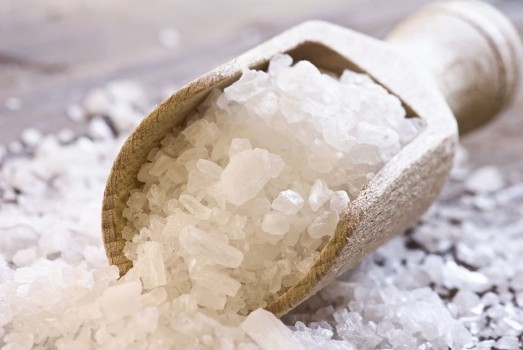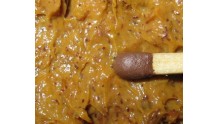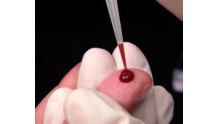The problem of respiratory diseases is quite relevant in modern world. Both adults and children suffer from such diseases, and the diseases themselves can occur in an acute or chronic form, provoke complications and significantly reduce the quality of human life. Of course, it is necessary to treat bronchopulmonary diseases in a complex and only under the supervision of a doctor. Very often, people who suffer from diseases of the respiratory system are advised to change the climate, visit resorts with sea air every year, or undergo speleotherapy courses, which are better known to us as “salt caves”. Beneficial features salt caves have been known to mankind for a long time and before today this procedure has not lost its popularity.
An increase in the glomerulus is observed in the biopluncture in the form of round red balls. By doing a bioparticle separation, 70% tissue for light microscopy, 20% for immunofluorescence, and 10% for electron microscopy. If tissue material cannot be assessed, cut off a 1 mm2 bioplec for electron microscopy at both ends, then collect a larger fragment for light microscopy and the remaining fraction for immunomorphology. If the tissue material obtained by puncturing is very sparing, the division of the biopathy, and therefore also the range of methods used, should include a provisional clinical diagnosis.
The benefits of a salt cave are obvious. Many residents of the metropolis visit resorts every year, where they offer visits to salt caves as a health improvement. Those who do not have the opportunity to visit the resort can visit artificial salt rooms, where, with the help of special equipment and salt aerosol, a microclimate saturated with salt particles is created. Of course such salt rooms can not be compared with natural salt caves created by nature, but still many choose this alternative and get excellent healing results. Reviews of doctors, as well as the people who visited the salt caves, are very positive. Many note that it was they who made it possible to mitigate the course of the disease, reduce the risks of relapses, and improve the body as a whole. However, not everyone will benefit from salt air inhalation sessions, since there are some restrictions, and for some the salt cave is completely prohibited. Indications and contraindications, doctors' reviews of speleotherapy sessions, important information that can be found by reading this article to end.
Strict procedures must be followed for the proper protection and transfer of biopsy material for pathological evaluation. The way in which the tissue material is protected depends on the time at which it can reach the histopathological laboratory. If transport time is estimated at 2-3 hours, untreated tissue should be placed on saline-saturated filter paper immediately after collection and sent to the histopathology laboratory in a sealed, ice-covered petri dish. If the biopuncture cannot be completed within 2-3 hours, it should be immediately after collection in the correct fixative supplied by the pathology laboratory.

Salt caves - the principle of operation
The healing microclimate of salt caves allows you to positively affect the work of the whole organism, but still they are most often recommended to patients who have a history of diseases of the bronchopulmonary system. Salt air in such caves contains a lot of useful microelements, as well as substances that allow to have anti-inflammatory, bactericidal, expectorant and restorative effects on the human body. In artificial salt rooms, both rock salt and sea salt can be used, but the principle of their operation is almost the same.
Incorrect fixation of biopsy material causes artifacts that make it difficult or even impossible to diagnose microscopic diagnosis. For light microscopy, the best fixative is 4% formaldehyde buffer solution for electron microscopy - a solution of glutaraldehyde in cacodyl buffer and immunofluorescence analysis is performed on unfixed areas.
What are the benefits of salt caves
Representativeness of the diagnostic material. It is considered that the bioflow is valid if the tissue material intended for light microscopy contains at least 10 glomeruli and 1 cross section of the artery for immunomorphological studies - 5 glomeruli, and for ultrastructural studies - at least 2 glomeruli. However, it should be emphasized that the presence of at least 20 glomeruli in the biopuncture is required for the diagnosis of focal focal lesions.
Among the positive properties that salt caves have on the human body, the following effect can be distinguished, which are due to the composition.
- An increased level of carbon dioxide allows you to regulate heat transfer, improve blood circulation, metabolic processes in cells and tissues of internal organs.
- Radion and its decay products in the composition of salt improve and stabilize the work of the cardiovascular system, normalize blood pressure, reduce the risk of inflammatory processes, and also improve the functioning of the immune system.
- Sodium chloride in the composition of the inhaled salt ensures its deep penetration into the bronchial mucosa, restores the patency of the bronchial tree, improves the functioning of the ciliated epithelium of the respiratory tract, and also stimulates gas exchange in the lungs.
- Trace elements contained in the air of the salt cave improve metabolic processes, normalize the work of the central nervous system, participate in the metabolism of the whole organism.

According to the standards recommended by the Nephropathology Working Group, a cortex of more than 2 mm 2 and more than 5 glomeruli is required to diagnose capillary lesions. To assess changes in tubular interstitial fields, the surface of the renal cortex must exceed 3 mm 2, and the number of glomeruli must be greater than.
Methods of morphological diagnostics of kidney biopotency
The biopsy material is evaluated by an experienced pathologist using light microscopy, immunofluorescence, and electron microscopy. According to current standards, a pathologist gains experience in nephropathy if he evaluates all three methods on at least 200 renal biopotencies annually. The fight against morphological changes with the clinical course of the disease requires knowledge of the clinic of kidney disease from the pathologist.
Visiting salt caves allows you to reduce the level of circulating immune complexes, normalize the content of immunoglobulins A, G, E, enhance the production of phagocytosis, and increase the number of T-lymphocytes. Such an influence of salt air will significantly reduce the manifestation of bronchial asthma and other diseases of an allergic nature.
The thickness of the sections should not exceed 2-3 µm; only trimmings with a thickness of more than 5 µm are used for the assessment of amyloids. Ruthenium first performs the following histochemical staining. Hematoxylin and eosin staining. Masson colorimetric analysis allows for selective assessment of glomerular sclerosis and interstitial fibrosis, the presence of a thrombus and fibrous necrosis.
Jones method of sterilization and evaluation of basement membranes, blood vessels, glomerulosclerosis. Congo red stain to assess amyloid and polarized light. Immunomorphological evaluation is an important component of the glomerular diagnosis of kidney disease. Immunofluorescence testing requires untreated tissue. Cryoprecipitation 3-4 μm sections of the cryostat are subjected to direct immunofluorescence with antibodies, most often conjugated with fluorescein. A positive result is a clear green glow, while a yellowish glow is most often associated with autofluorescence of the structural components of the kidneys or fat droplets and is an artifact.
Indications for visiting
A visit to salt caves allows you to improve the whole body, as well as alleviate or eliminate the manifestation of the following diseases:
- Bronchial asthma in remission or mild exacerbation.
- Allergic diseases affecting the upper respiratory tract or nasal mucosa.
- Chronic bronchitis, including obstructive conditions.
- Smoker's cough.
- Chronic diseases of ENT organs - rhinitis, sinusitis, adenoids, tonsillitis, laryngitis.
- Atopic dermatitis, eczema.
- Psoriasis in remission.
- Frequent colds, viral or bacterial infections.
- Recovery after operations on the respiratory organs.
- Autonomic disorders, frequent stress, depression, chronic fatigue syndrome.
- Hypertension I and II A degree.
- Food and drug allergies.
- Diseases of the thyroid gland.

In each case, negative and positive controls are required. Immunomorphological testing includes qualitative and semi-quantitative assessments of light intensity, most often on a scale from 0 to. Photographic archiving of all positive immunofluorescence results is recommended. In the case of a limited number of diagnostic materials, immunofluorescent testing can be performed on paraffin sections or by immunoassay after preliminary proteolytic digestion of tissues.
The advantage of enzyme immunoassay technology lies in the possibility of using archival materials and low costs compared to immunofluorescence, because it does not require additional expensive equipment. The ELISA method does not require the addition of an additional tissue fragment, the reactions are durable and easily archived. The disadvantage of enzyme immunoassay technology is the low repetition of reactions and significant background color, which prevents the interpretation of reactions.
Based on the above indications, in which a visit to a salt cave may be recommended, it can be concluded that inhaling air in such rooms will help to cope with a large number of diseases, strengthen the body, increase tone, and improve the general condition.
What's the use?
Salt caves are not a panacea for all diseases, but only an additional method of alternative medicine, which has repeatedly proven high efficiency in practice during its existence. The doctors' comments about speleotherapy are overwhelmingly positive, since many are sure that several sessions of this technique can really improve a person's condition and reduce the risks of exacerbations of chronic diseases. Repeated clinical studies have proven that salt caves can really benefit a person. So several courses of speleotherapy will allow:
In general, immunofluorescence is considered to be more reliable than immunohistochemistry in the diagnosis of glomerular kidney disease. According to current standards, in each case it would be optimal to carry out an ultrastructural examination. However, due to costs, it is reasonable to protect the material in the epoxy block and decide to evaluate the electron microscope based on clinical data and light and fluorescence microscope results.
The most commonly used fixative is 3% glutaraldehyde buffer or 5% glutaraldehyde in cacodyl chloride buffer. The material is then immersed in a 1% osmium tetroxide solution and immersed in epoxy blocks. Toluidine blue stained 1 μm sections are evaluated under light microscopy, selecting a tissue fragment for ultrastructural examination. Subsequently, ultrathin sections are counterstained with uranyl acetate and lead citrate.
- Improve metabolic processes in the body.
- Activate regenerative processes in the tissues of internal organs.
- Boost immunity.
- Increase the level of hemoglobin in the blood and the number of red blood cells.
- Improve the functioning of the respiratory, nervous and cardiovascular systems.
- Clear the airways of pathogenic bacteria, allergens.
- Improve blood circulation.
- Provide the cells with the necessary amount of oxygen.
- revitalize appearance skin, accelerate the exfoliation of dead cells;
- Increase efficiency, improve psycho-emotional state.

Ultrastructural evaluations are performed at low, medium and high magnification. In cases where the bioplect fragment for ultrastructural evaluation has not been protected or if the protective tissue fragment protected for electron microscopy does not contain glomeruli, paraffin material can be used using an appropriate section preparation technique. However, it should be kept in mind that the ultrastructural evaluation of formalin bioplasty often does not allow unambiguous interpretation of minor lesions.
As long-term practice shows, visiting a salt cave increases the risk of remission of chronic diseases, reduces the amount of drugs used.
It is important to know that during the first sessions of speleotherapy, chronic diseases may worsen, but this is not scary, but the body's natural reaction to treatment and recovery. Basically, doctors recommend that their patients undergo 2 or 3 courses per year, each of which consists of 10-20 sessions. It is very important not to interrupt the treatment course, as well as to take it exclusively as prescribed by the doctor.
Collaboration between a doctor and a pathologist in the diagnosis of glomerular kidney disease. In each case, the pathologist who evaluates the kidney biopsy should have clinical and laboratory findings. Interpretation of the microscopic image should be based on the morphological-clinical morphological and nephrological opposition, preferably by organizing periodic meetings during which microscopic changes in biopotons collide with the clinical picture.
The morphological changes described by the pathologist should serve as an indication to the nephrologist regarding the predicted rate of progression of renal failure and the reversibility of the lesions. Nephrologists must be aware of the possibilities and limitations of the microscopic techniques used by the pathologist and be able to interpret the data contained in the description of morphological changes.

Harm from salt caves
Despite the numerous and healing properties of speleotherapy, this procedure can not be performed for everyone, moreover, it can be harmful to health. That is why doctors strongly recommend not to undergo speleotherapy sessions without their appointment. The main contraindications to visiting the salt cave are the following conditions:
Electrical parameters necessary to understand the operation of direct current. Voltage is the electromotive force created by the potential difference between the cathode and anode. This is the voltage that allows electrical current to be supplied. If both poles are connected by a conductor, then equilibrium between the two poles will be reached and the voltage will drop to zero. Voltage units are volts.
Intensity is the strength of the current or the amount of electricity that passes through the cross section of a conductor in one second. The intensity is measured in amperes. Force is the work that can make electricity at a certain time. Power supply watt.
- Open bleeding.
- Oncological diseases of different localization and severity.
- Claustrophobia.
- Drug and alcohol addicts.
- Any diseases of the internal organs in the acute stage.
- coronary insufficiency.
- Pathology of the kidneys.
- Emphysema of the lungs.
- Increase in body temperature.
- Hypertension of the second and third stages.

The effect of galvanic current on the body
Resistance - when flowing through a conductive conductor, it withstands resistance. Its size depends on the type, length and section of the guide. The better the leadership, the less resistance. Current flows through sections of the body between the electrodes. Electrolytes are chemicals that carry current in an aqueous solution. Electrolysis is a phenomenon that occurs when current flows through tissue electrolytes. In an aqueous solution, due to the action of water on electrolyte molecules, i.e. salts, acids and bases are formed, and this phenomenon is called dissociation.
Given the presence of contraindications to visiting salt caves, they should be prescribed by a doctor who is familiar with the person’s medical history. Reviews of some doctors are not so optimistic about the benefits of salt caves, since they believe that such procedures are more like self-hypnosis and there is no pose from them, in addition to psychological confidence in their effectiveness. However, salt caves are used in many European countries. They really help many to improve their health, reduce the recurrence of existing diseases.
As a result of the dissociation of the electrolyte, two types of ions are formed: positive cations and anions with negative charges. Electrolyte solutions conduct electricity and have the ability to produce secondary reactions at the anode and cathode. The positive charges are metals and hydrogen, while the hydroxyl group and acidic residues are negative. At the electrodes, ions lose their charge and become electrically neutral, they can either deposit or produce new compounds by interacting with metals with metals or water.
Salt cave alternative
Salt caves, which are also called mines, are not present in all regions of Russia, but only in those where rock salt is mined, so many resort towns, like sanatoriums or private clinics offer salt rooms, are artificially created by man. To create the right microclimate in such rooms, special equipment, salt aerosols, which fill the rooms where a person is located, helps. Such rooms maintain a certain temperature, humidity, thereby the desired concentration of nutrients. Patients in salt rooms can stay in them for 5 to 20 minutes - this is decided by the doctor based on their testimony. Comfortable conditions allow a person to relax and enjoy the procedure.
Electrolyte reactions occur in the region around the electrode: oxygen and acid are evolved at the anode, while hydrogen and alkali are observed at the cathode. Galvanics stimulates the motor nerves and calms the sensory nerves. Phenomena occurring under the electrodes.
Electrophysiological processes occurring in cells under the influence of galvanic current
Effect on blood vessels - reaction of blood vessels
galvanic response. Influence at nervous system and muscles - the reaction of nerves and muscles. For systematization - the effect of direct current on the body: - significant and prolonged blood circulation due to the expansion of blood vessels and the secretion of histamine-like substances. - expansion of lymphatic vessels; - accelerate metabolism; - analgesic and sedative effect on sensory nerve endings and increased excitability and toning on motor nerves; - anti-inflammatory; - accelerate the regeneration of damaged nerves. - increase in tone; - acceleration of regeneration processes; - analgesic effect - stronger under the anode.
You can create a salt room at home, but for this you need to buy special table lamps made of salt crystals, which are very useful for humans and can be compared with their qualities with quartz irradiation. Having such lamps at home, you can disinfect the room, fill the room with sodium ions, chlorine and other useful elements that positively affect human health.
Reviews of doctors
Nadezhda Gogoleva, 46 years old, Moscow, pulmonologist
I have been a pulmonologist for over 25 years. During her many years of practice, she has repeatedly met patients with serious problems with the respiratory system. I can say with great confidence that for most of my patients, salt caves can be compared to a real salvation. Very often, after the treatment, I advise my patients, both small and large, to change the climate, go on vacation by the sea or visit salt rooms, which can be found in many private clinics in Moscow. I believe that salt caves are often a great alternative to taking certain medications or allow you to reduce their amount. Salt air is especially useful in the initial stages of the disease, but it is worth visiting the rooms only during remission. I always warn my patients that after the first 2 procedures a relapse may occur, but it will definitely disappear within a few days. Basically I advise 10 sessions, but sometimes a person needs less or more. In some of my patients who suffer from bronchial after halotherapy sessions, the exacerbation of the disease has significantly decreased, and a positive prognosis is also present in chronic bronchitis. Just a few sessions will help to stop the symptoms, speed up the separation of viscous sputum, clear the bronchi of bacteria and allergens. Of course, salt caves are not shown to everyone, but still I think that this is a very useful procedure that benefits the whole organism.
Victor Sychev, 33 years old, Omsk, allergist
I have my own opinion about the effect of salt caves on the human body. I think that for some people they are useful, but for the majority, this is nothing more than a placebo effect. I believe that the healing effect can be obtained on the sea coast or in natural salt mines, but not in the salt room, which is offered to visit on almost every corner. For some unscrupulous businessmen, salt rooms are nothing more than a business, and the origin of the salt is completely unknown. To my great regret, in my practice I met several patients who, after speleotherapy sessions, only got worse, their chronic diseases worsened. Therefore, I am not entirely positive about salt caves and I think that everything is individual and the decision whether such sessions are necessary for a person should remain with the attending physician, who takes responsibility for the possible consequences.
Katerina Kirilenko, 40 years old, Krasnodar, general practitioner
Inhalation of air saturated with salt vapors is quite beneficial for human health, especially for those who suffer from bronchopulmonary pathologies. Several sessions of speleotherapy will help clear the airways of accumulated mucus, increase defensive forces organism. I quite often advise my patients to spend several days in salt caves, but of course the duration of the interruption should not exceed more than 15 minutes. My granddaughter, like most modern children, is often sick viral diseases which eventually end in bronchitis. After 10 trips to the salt room, she began to get sick a lot less. I can say with certainty that the inhalation of air in salt rooms really works. Moreover, such sessions will increase immunity, improve metabolic processes, normalize the activity of the central nervous system, and also reduce the aggressiveness of allergens. I often advise my patients, both adults and children, to visit the salt rooms after the treatment, or to find time and go on vacation to the sea coast!
Alexander Molotov, 42 years old, Moscow, pulmonologist
Despite the fact that salt is a “white death”, there is still a benefit from it and it manifests itself in visiting salt caves, which for many have become a real panacea in the treatment of diseases of the lungs, bronchi, and ENT organs. O healing properties A lot of air in salt caves is known, but nevertheless it will bring benefits to those who have problems with the respiratory system. Despite the fact that many of my colleagues speak extremely negatively about this method of treatment, I have a completely different opinion and believe that in salt caves or rooms you can improve the body. Several procedures will help to significantly reduce the risk of exacerbations of bronchopulmonary diseases, and if the disease is only on early stages its development, then the salt air will help to completely cure the disease. Of course, the best alternative to a salt room will be a seaside vacation, but if this is not possible, staying in artificially created halochambers will perfectly replace a trip to the sea!
Olga Vasnetsova, 30 years old, Voronezh, immunologist-allergist
Salt caves, or as they are now called - halotherapy, sylvinite therapy or speleoclimatotherapy, are quite popular in our time and for good reason, since such procedures saturate the human body with useful mineral particles that positively affect the functioning of the whole organism. I often advise my patients who suffer from bronchial asthma, bronchitis or bronchitis with obstruction to visit salt rooms or, if possible, go to the sea coast, where there are natural sources of rock or sea salt. I can say with confidence that such sessions are very useful, but still, like any other method of healing, it has its own contraindications, so you should not visit salt rooms without consulting a doctor. In addition to the fact that salt air will help to cope with lung diseases, it is useful for allergy sufferers suffering from seasonal rhinitis, conjunctivitis. For my patients who have no contraindications to inhaling salt air, I recommend 10 sessions three times a year. My patients are very satisfied with the result, and the effectiveness is noted after the first treatment course.
Kristina Rak, 44 years old, Svetlogorsk, pediatrician
In the last few years, more and more children suffer from diseases of the bronchi, lungs, as well as allergic diseases. The reason for this is most often poor ecology, therefore, in order to improve the child's body, I often advise my young patients to be treated with natural energy, or rather, visiting salt caves or rooms for inhaling salt air. In the acute period of the disease, it is not worth attending such sessions, but as a preventive measure or after an illness, this is an excellent method of recovery. In addition to the fact that salt caves will help in the treatment of bronchopulmonary diseases, my observations, as well as the observations of my many colleagues, show that after sessions, kids improve their mood, immunity, and 2 sessions a year will help to significantly reduce the risks of catching a viral or bacterial infection. . In addition, the salt cave will help reduce the intake of medications, among which hormonal bronchodilators, which are not entirely useful for long-term use, have many contraindications. My own long-term observations of patients allowed me to say with confidence that halotherapy for children will help eliminate nervousness, mood swings, aggressiveness and increased excitability. The only thing worth paying attention to is that the doctor should prescribe sessions of inhalation of salt air and only after he is convinced that the small patient has no contraindications to such a procedure.
Video





is a method of non-drug treatment and prevention of diseases of the respiratory system, based on the healing effect of salt aerosol. The method is based on the beneficial effect on the body's defenses of the smallest particles of salt, which are in the salt room (halochamber) in the form of a dry aerosol of the required therapeutic concentration.
To create a therapeutic microclimate and maintain a stable concentration of sodium chloride in the air, a special device is used - a halogenerator. It saturates the salt room with dry salt aerosol, creating conditions as close as possible to the environment of natural salt caves.
Salt particles of 1–5 microns in size penetrate into the distant sections of the bronchial tree, causing a number of responses aimed at activating the drainage function. At the same time, there is an anti-inflammatory effect, an indirect effect on the body's resistance to infectious agents, and strengthening of immunity.
The result of such a complex effect is a decrease in the bronchospastic component, so the technique is actively used to treat bronchial asthma and other respiratory diseases.
The main indications for treatment in salt caves
Many years of clinical experience in the use of salt rooms has proven the high efficiency of this method, especially in the treatment of bronchitis with an allergic component in children and adults. Indications and contraindications for halotherapy studied thoroughly enough, which allows you to prescribe this method in specific clinical situations, getting excellent results.
- chronic bronchitis, especially with an allergic component;
- seasonal allergic manifestations;
- chronic sinusitis, tonsillitis;
- vasomotor and allergic rhinitis;
- bronchial asthma.
The benefits of halotherapy have been proven in the weakening of the body's immune system, disorders of the cardiovascular system, and some skin diseases. The procedure has a pronounced cosmetological effect: it helps to rejuvenate and renew the skin, remove toxins and normalize metabolic processes in the body.
One of indications for halotherapy is chronic stress and overwork - the atmosphere salt room has a beneficial effect on the psycho-emotional state, promotes relaxation and overall health.
Below is a list of diseases and conditions of the body in which halotherapy is prescribed and effectively applied, in the form of a visit to a salt cave, halochamber or speleochamber.
